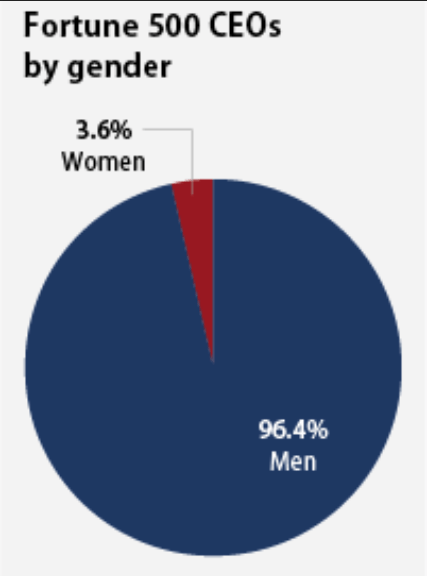Female representation in positions of power are lacking
3 min read
Center for American Progress
By EMILY SHUMAKER
Staff Writer
More women should be placed in positions of power.
Women have characteristics that qualify them to perform better and contribute more than men when placed in leadership positions. They are known to be high-performers in the workplace, are capable of excelling in leadership positions because they are detail-oriented, more fastidious to conscience and different perspectives and tend to show greater concern for the care and success of their teams than men.
According to BusinessInsider.com, however, only 3%-4% of CEO’s in today’s workplace are women.
In a study conducted by the Zenger-Folkman firm measuring the overall effectiveness of men and women leaders, women scored a 54.5 for overall leadership effectiveness, compared to men who scored 51.8. The study shows that women are more effective over time because they ask for more feedback and take action to improve, while men tend to assume after being in the position for a while that they are doing fine and do not need to improve.
In this same study by Zenger-Folkman, when rated on a list of 16 competencies, women actually scored higher than men in 12 of the 16 categories by 0.5 to 6.6 points. They are statistically proven to be stronger in areas such as practicing self-development, taking initiative, displaying honesty and integrity, building relationships, and developing others.
These studies prove that women are highly qualified for leadership positions, yet men still make up the majority of high leadership positions. Why?
The Harvard Business Review suggests blatant discrimination as one possible reason. Visier, a cloud solution for people analytics and workforce planning, suggests that women tend to take more time off than men for childcare, which slows their progress.
According to a Visier analysis, women under 40 still make 79 cents for every dollar men earn, and that women over 40 make 82 cents for every dollar men earn. Men also still receive more promotions than women do in the workplace.
Stereotypically, people view women has having more nurturing capabilities than men, but the characteristics which highlight women’s strengths in the studies do not fall under the category of nurturing. Women are strong and capable of executing challenges and managing teams extremely well.
Women in the workplace feel that they must over-perform in order to prove that they can perform equally as well as the men in adjacent positions.
Women’s strengths are still overlooked and their potential is untapped. Even at a historically high point of feminism and equality, women are still an under-appreciated resource in many areas of today’s world. Mothers, who take more time off than men for the childcare in their families, are at a disadvantage for career growth.
Mothers who spend their days managing the family calendar would make great managers because they are accustomed to developing strategies, are multitaskers and are more aware of the needs of the people around them. Their distinct set of strengths enable them to be more effective in the workplace.
This is not to put down men. Clearly, statistics show that men are also effective leaders. However, the statistics also show just how capable women are of successfully handling leadership roles, though the advantages of being a male seem to surpass.
The business structure needs to find ways to incorporate women’s strengths in order to move their teams and ideas to the next level of success. Employers should heed these numbers seriously and promote women to more leadership positions. They are an incredible asset to any team and their ideas and skills bring diversity and stability.
These hard facts show that women are incredibly talented in ways that significantly improve any business, organization or project. They continue to be an overlooked resource in today’s world. Women are indisputably talented and these studies show that there is no basis for worrying over whether or not women can perform well when placed in high positions, and we must continue to push for and support women of power to further promote workplace equality.


